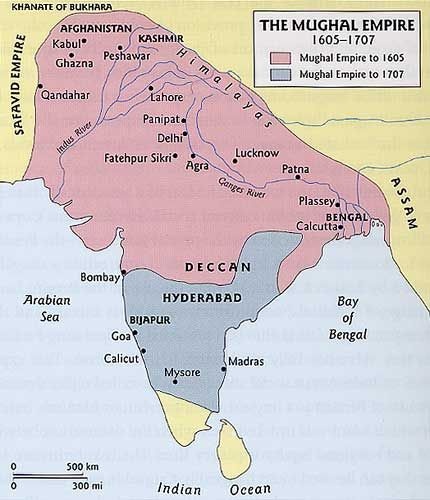
Introduction
The comprehensive documentation on the we All-India Muslim League collected in this book illuminates the Muslims' struggle for freedom in the Indo-Pakistan Subcontinent from 1906 to 1923 in Volume 1 and from 1924 to 1947 in Volume II The League documents show how, through a variety of circumstances and vicissitudes, this struggle led to the division of the Subcontinent and the creation of Pakistan. They are in this sense documents on the foundations of Pakistan In the introduction that follows, the main attempt is to picture the salient developments of the Muslim movement after the popular uprising of 1857, with particular reference to the major turning points in its history. It appears appropriate, however, to preface this account with a brief sketch of the spread of Islam•in the Sub-continent.
The Subcontinent's Islamic Background:
The Subcontinent's contacts with the Middle East go back to pre-historic times, as there is evidence of mutual influences between the civilization of Southern Mesopotamia, Iran and the Indus civilization of Mohenjodaro and Harappa, which is to be seen in similarities of a number of their antiquities, "These strongly suggest a trade in ancient times between the Indus valley and her western neighbours."' This contact was continued in later ages , and trade with Arabian and other subsequently Muslim Middle East countries preceded the advent of Islam Pre-Islamic Arab settlements on the coast of Southern India provided a link between Arabian ports and those of South and South-East Asia as well as with India.
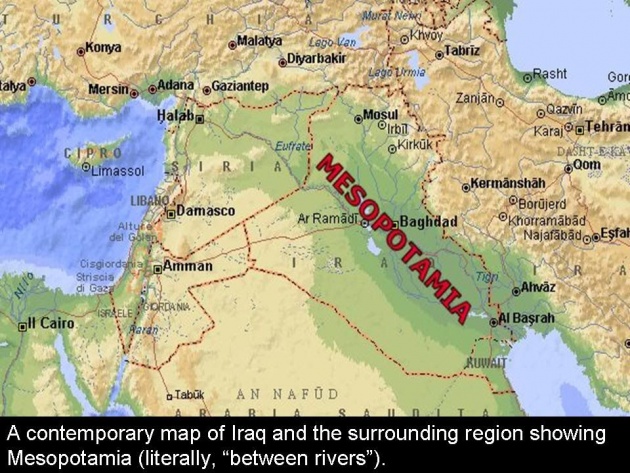
After the advent of Islam and the growth of the Muslim Khilafat, these commercial activities were intensified, and with it, the spread of Islam through missionary activities reached the Subcontinent. Tradition also has it that Jats (an Indian people) had been seen in the company of the Prophet. In their conquest of Persia, including the provinces of Kirman and Makran, the Arabs came face to face with forces of the ruler of,Sind, who had made common cause with the Governor of Makran; but it was not until the sea-borne trade of the Arabs in the Indian Ocean was jeopardized, by pirates operating, from Sind, that Arab efforts to subjugate Sind began in 636. Then in 712, proceeding through Makran, Mohammad bin Qasim appeared before the gates of Daibul and established Muslim rule in Sind upto Multan. Qasim guaranteed freedom of worship for all, which was particularly welcomed by the oppressed Buddhists of Sind; and trusted both Brahmins and Buddhists with responsible posts in his administration. His justice and the good conduct of his Arab comrades so impressed the inhabitants of Sind that large numbers of them began to accept Islam as their religion. Arab trading and missionary activities spread to the Punjab, Baluchistan and the tribes of the mountains in the North-West. In the eighth and ninth centuries, the Arab sea-route for trade followed the line of the coast of Bengal, and Arab merchants visited the port of Samundar; frequented Sandwip and Rhumi, lying between Assam and the sea; and according to another tradition, in the early tenth century, formed a settlement in Chittagong.' It is to be noted, however, that, as in the subsequent growth of Islam in the Subcontinent, influences were not one-sided. The Arabs acquired the use of the decimal numerals, which when transmitted to Europe by them, came to be known as Arabic numerals; they learned chess from the Hindus; Sindhi music exerted its influence on Arab music; and Indian books on Ayurvedic medicine and on astronomy were translated into Arabic during the rule of the Abbasid Khalifa, Harun-ur-Rashid, in Baghdad (786-809).
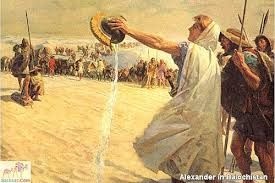
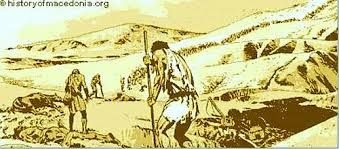

Muhammad Bin Qasim

Muhammad Bin Qasim
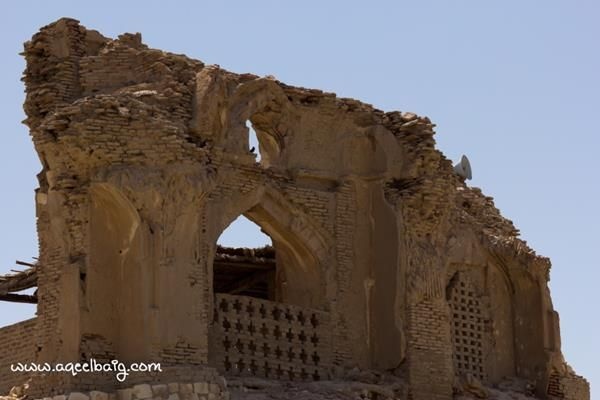
Following three centuries of Arab rule, the Turkish Ghaznavids appeared in the Subcontinent, and their rule over the Peshawar region, the Punjab and Multan, roughly corresponding to what now constitutes West Pakistan, lasted for about 200 years until the middle of the twelfth century. The Ghaznavids have often been depicted as mere plunderers, but they patronized learning creatively, and did much to establish Lahore as a cultural centre : it was in Ghaznavid Lahore that the poet Masud Saad Salman wrote in Arabic, Persian and the local Prakrit and the famous Ali Hajjweri. known as Data Ganj Bakhsh, wrote one of the earliest works on sufism, Khushful-Mahjub.
But it was only after Mohammad Ghori's conquest of Delhi and Ajmer in 1192 that Muslim rule began to be established over the whole of the Subcontinent, while Sultan Ghori's Mamluke slave Qutab-ud-Din Aibak later crowed Sultan (1206-1210) was consolidating the newly acquired territory in the North-West, a Khalji adventurer, lkhtyar-ud-Din. Mohammad bin Bakhtyar, unaided by any royal support, carried the Muslim banner to the eastern extremities of the Subcontinent, occupying Bihar and Bengal by the beginning of the thirteenth century. It was also under Aibek that Delhi, heretofore a provincial town, for the first time became the capital. Succeeding Aibak as Sultan, Iltumish extended the rule of the Sultanate to Bengal. This phase of early Muslim rule in the northern plains of the Subcontinent generally referred to as the Sultanate period, witnessed the rise and fall of five dynasties in some three hundred years between 1206 and 1526: the slaves, Mamluka or Qutabi (1206:1290); the Khaljies 1290-1320); the Tughlaqs (1320-1413); the Suyyids (1414-1451); and the Lodhis (1450' 1526).
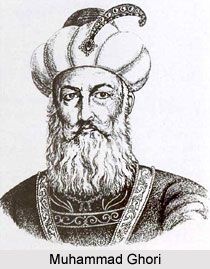
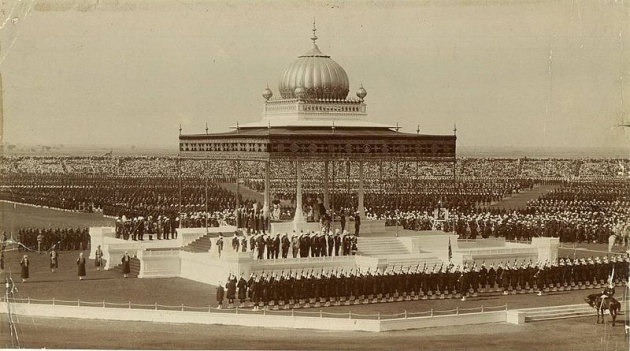
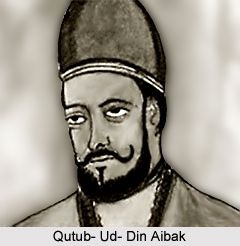
Tomb of Qutubudin Aibak
Thereafter the Chughtai Timurid, Zahir-ud-Din Mohammad Babar founded the Mughal Empire with the conquest of Delhi and Agra. This in the time of Shah Jahan (1627-1656) and Aurangzeb (1656-1707), extended to cover the South of the Subcontinent. With the exception of some 16 years in which the Persian Stirs reigned (1538-1555), the Mughal Empire endured and did not begin to decline until after the death of Aurangzeb, to whose constant campaigns, leading to the widest expansion of the Mughal Empire, and rigid rule at least part of,the reason of this decline may be traced. Fifty years after his death the representative of the East India Company defeated the Mughal Viceroy of Bengal, then the richest province of the Empire; and subsequently other centres of Muslim power crumbled one after the other. In 1799 the defeat of Tipu Sultan at the battle of Serinagapatam, in which he was killed, ended Muslim power in the South,Hyderabad became a dependency; Oudh, later referred to as the United Provinces was annexed in 1856; and the defeat of the uprising of 1857 dealt the final blow to the Mughal Empire.
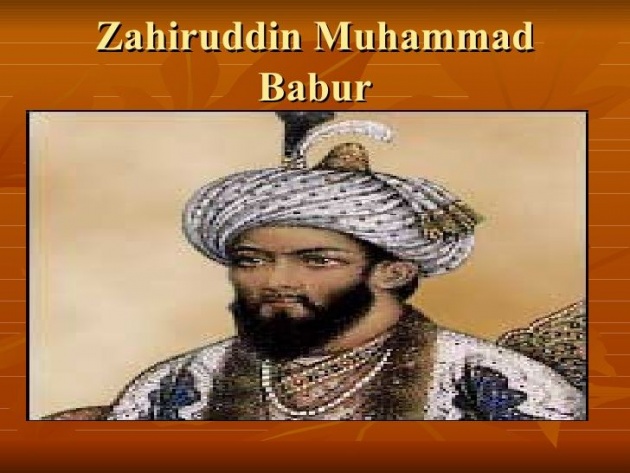
Zahiruddin Muhammad Babar
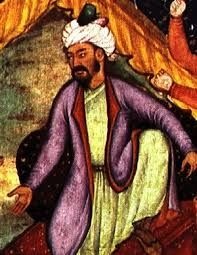
Zahiruddin Muhammad Babar
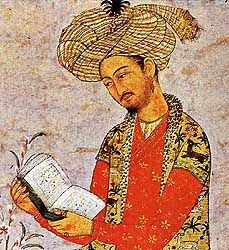
Zahiruddin Muhammad Babar
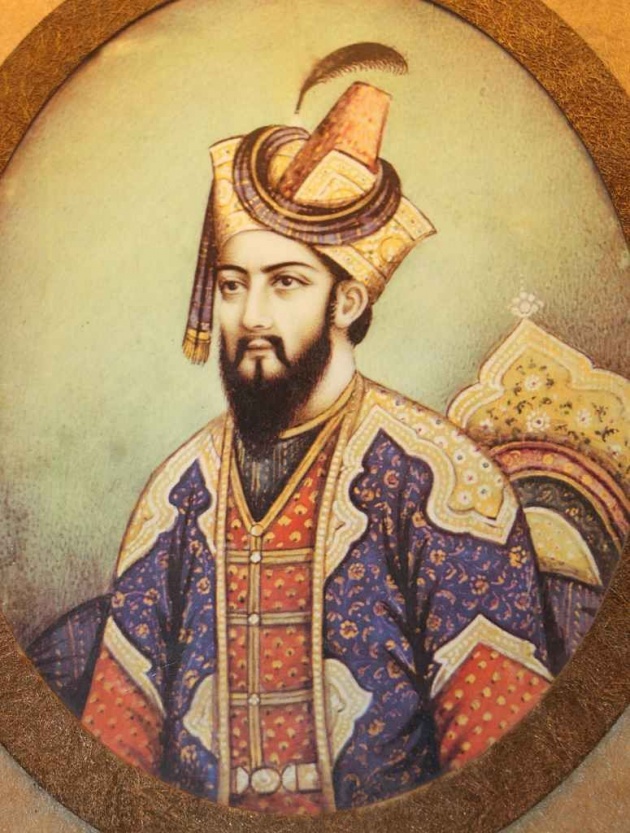
Zahiruddin Muhammad Babar

Shahjahan Mughal Emperor
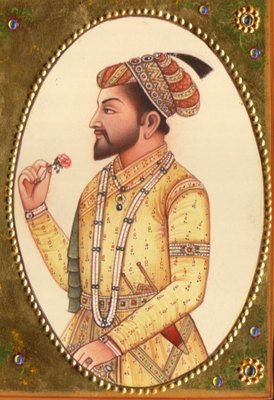
Shahjahan Mughal Emperor
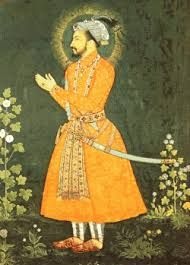
Shahjahan Mughal Emperor
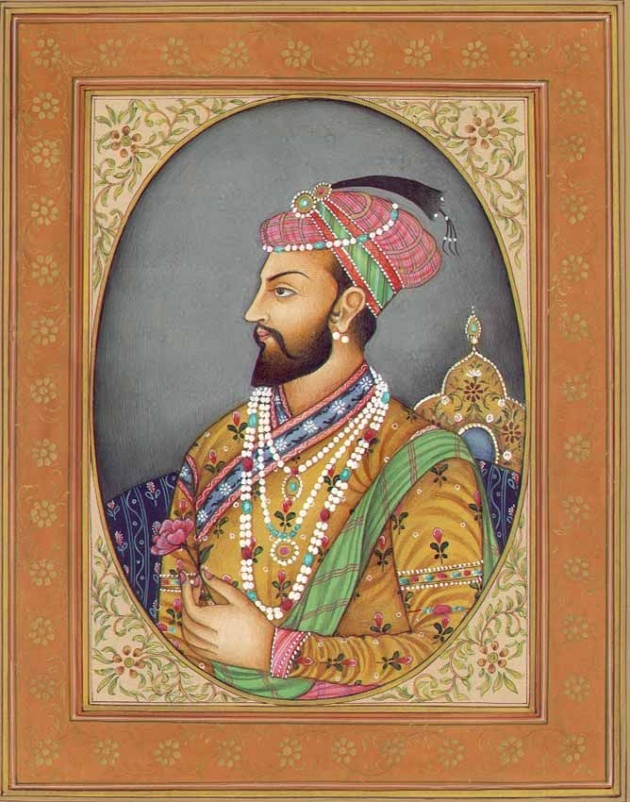
Shahjahan Mughal Emperor

king Aurangzeb
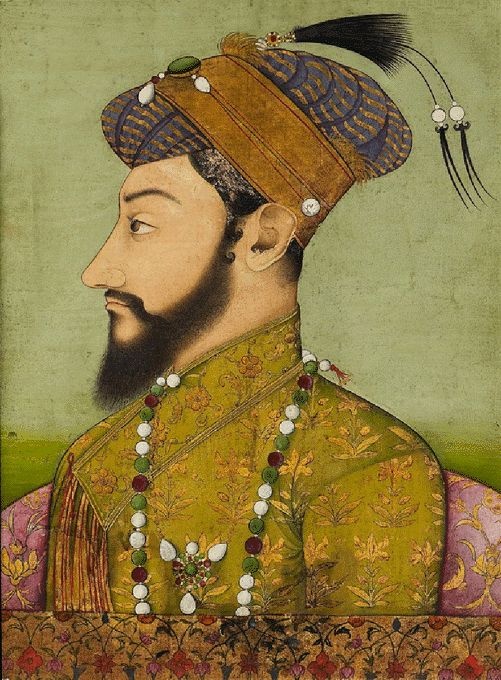
king Aurangzeb

king Aurangzeb

king Aurangzeb
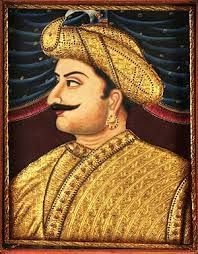
Tipu Sultan
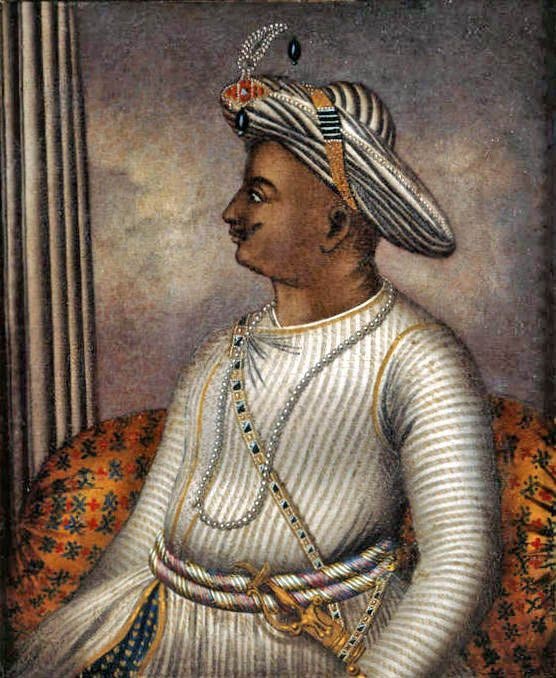
Tipu Sultan

Tipu Sultan
Cultural Polarities of the Hindu-Muslim Relationship:
The Muslim culture that developed in this period of Muslim rule included local Indian influences as well as those of Arabs, Turks, Afghans and Iranians; what introduced cohesion in diversity among the Muslims resulted largely from the teachings of Islam-in particular the unity of God, the equality of man and the prophethood of Mohammad-and the strong common influence of Arabic and Persian in all languages in that part of the Subcontinent that is Pakistan to-day. The Iranian impact was particularly strong, since, from the time of the Ghaznavids, Persian had been adopted as the court language, and during Mughal rule Iranian immigration was encouraged. But just as Islam was the biggest uniting factor among different ethnic groups of Muslims, so was it also the biggest factor dividing them from the Hindus and their tradition of Hinduizing and absorbing those non-Hindu religious elements which they could not eliminate altogether.
Despite contact, co-operation and mutual influence, which reached their height in the time of Akbar (1542-1605), who attempted a synthesis of Islam and Hinduism, and Shah Jahan, whose administration included an even larger number of Hindus in positions of high responsibility than that of Akbar, Muslim and Hindu communities maintained distinct social, as well as religious, identities, although a small minority of, Persianized Hindus maintained close social ties with the Muslim aristocracy. The points of closest contact were formed in music, the Urdu language, painting, other fine arts and architecture--that is, apart from those constituted by the two communities inhabiting the same geographical area and sharing some common ethnic origins, for most Muslims in Subcontinent were and are Indian converts to Islam. While the unifying factor of the fine arts and classical music was naturally limited to comparatively few individuals, Urdu which is a composite language, based on the Hindi Kbari Boll, a rich vocabulary of words from Arabic, Persian, the Prakrits (vernaculars), Sanskrit and Turkish, written in the Arabic script could have been a major unifying factor as the lingua franca for all inhabitants of the Subcontinent, as indeed, until independence, it was for the Muslims of different regions of the Subcontinent. Whereas this fact is again and again emphatically brought out in the following Muslim League documents, they make the progressive undermining of this objective equally clear. This failure is thus symbolic of the rift between the two communities-of the fact that what divided them was stronger than what might have given them unity, which then ultimately, and perhaps, inevitably, led to the establishment of two separate Nation-States. But this is to anticipate matters; we must now take up the story from the aftermath of the Uprising to recognize both (a) the nature of the Muslim identity in the Indo-Pakistan Subcontinent and (b) the way Hindu-Muslim relations swayed between unity and division-even as each community gradually developed and stepped up its struggle for freedom from foreign rule-towards the final denouement of Partition and Pakistan.

Jalaluddin Muhammad Akbar

Jalaluddin Muhammad Akbar
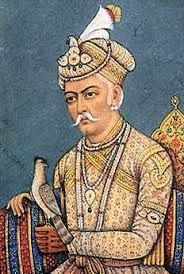
Jalaluddin Muhammad Akbar

Jalaluddin Muhammad Akbar
So its all about the Mughal emperor . In Next Part I will tell you peoples about the British Empire. Hope you enjoyed my Blog. Stay tuned for the next Part.
To be continued......



